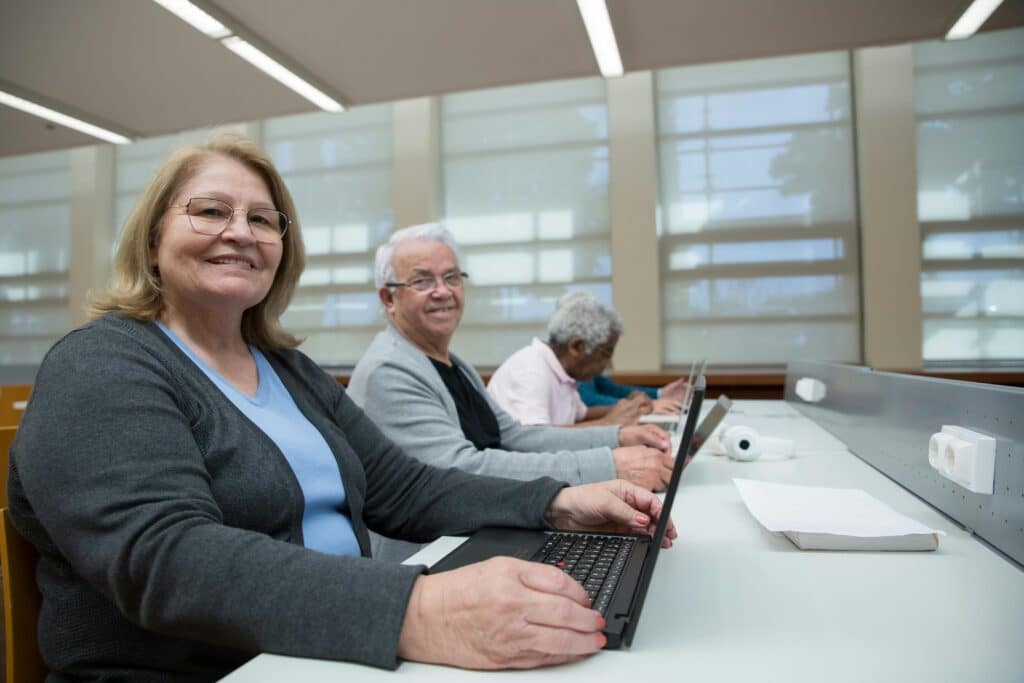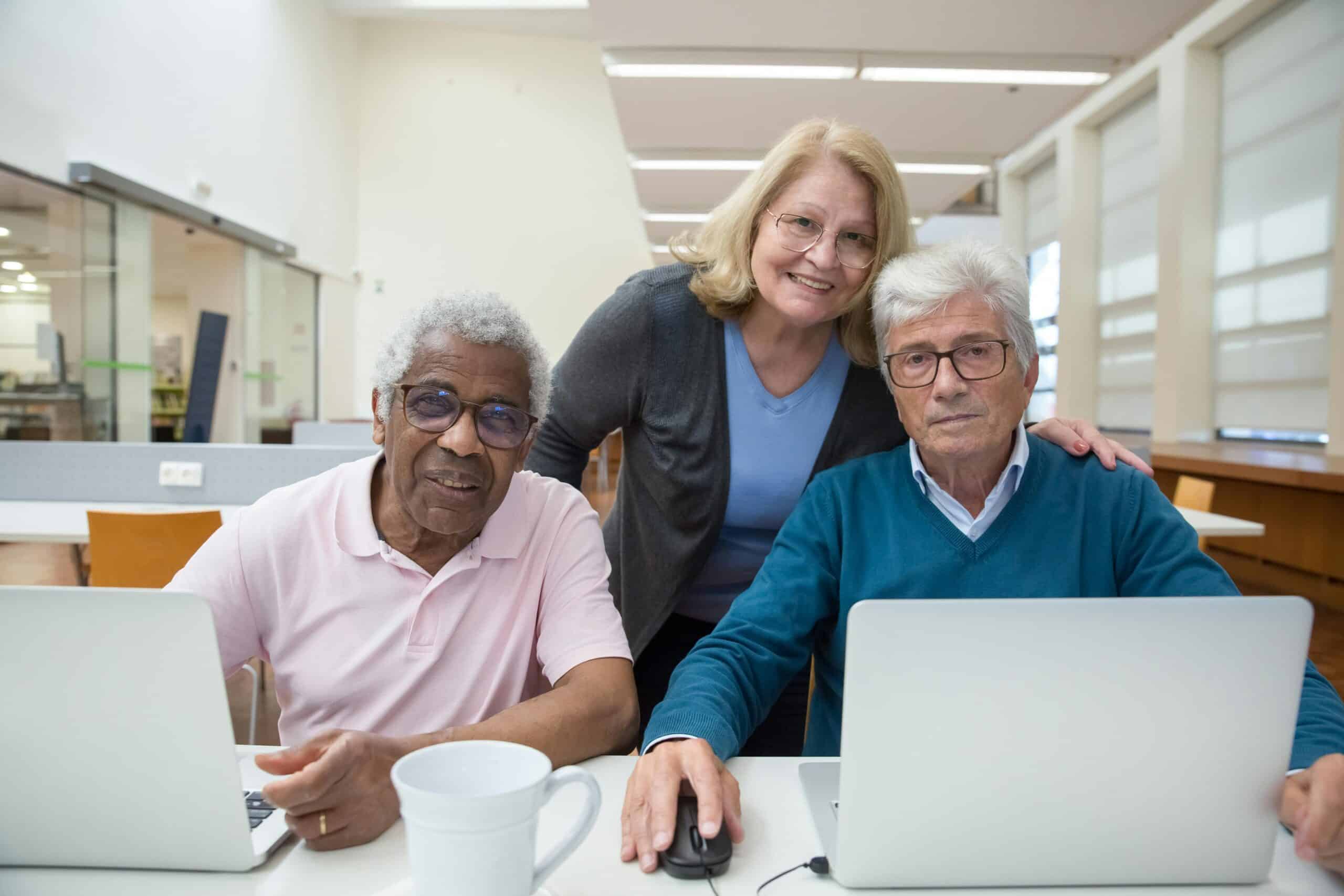Digital literacy and digital inclusion are not just buzzwords, but are essential for societal participation in today's technology-driven world. However, many older adults face challenges accessing and utilizing digital tools, leading to social isolation and limited access to critical services.
Empowering seniors to become proficient with technology is not just a trend; it is a crucial step toward enhancing their quality of life and staying connected in our tech-dependent society. This essay explores five key strategies to bridge the digital divide and empower older adults.
Breaking Barriers to Digital Inclusion
Older adults often encounter significant obstacles when engaging with technology, highlighting the importance of digital inclusion. For instance, [insert statistic or case study here]. One of the primary challenges is a lack of access to digital devices and reliable internet connectivity.
Many seniors do not own smartphones, tablets, or computers; even if they do, unstable or unaffordable internet services often prevent full utilization. These barriers prevent them from participating in online activities, such as video calls, online banking, or accessing health information.
Moreover, a lack of digital literacy compounds the issue. Older adults may struggle to navigate modern technology without proper training, leading to frustration, decreased self-esteem, and reluctance to adopt tools that could improve their lives.
Concerns about online safety and privacy deter seniors from engaging with digital platforms, leaving them vulnerable to isolation in an increasingly connected world.
Five Strategies For Digital Inclusion
Improving Access to Affordable Technology
Affordable technology is a cornerstone of digital inclusion, ensuring seniors can access the tools they need to participate fully in the digital world. For instance, programs like "Tech Savvy Seniors" in Australia provide free or low-cost training and device access for older adults. In contrast, the United States "Lifeline" program offers discounted internet services to low-income households, including seniors.
These initiatives demonstrate how subsidized technology can significantly reduce barriers and foster greater participation in the digital world. Many seniors cannot afford the latest devices or internet services, creating a significant barrier to participation. Community programs and government initiatives can help by subsidizing technology and providing low-cost internet options.
For instance, local libraries and senior centers can offer free access to devices and Wi-Fi, enabling older adults to explore digital tools in a supportive environment. Partnering with technology companies to provide affordable packages for seniors is another practical approach to address this gap.
Delivering Tailored Digital Literacy Training
Digital literacy training is essential for older adults to build confidence and competence in using technology. Workshops and one-on-one tutoring tailored to seniors' learning paces can significantly impact digital inclusion and confidence among older adults.
For example, the "Generations Online" program in the United States offers free, step-by-step tutorials for older adults, focusing on practical skills like sending emails and navigating the internet. Similarly, initiatives like the "Age UK's Digital Champion" scheme pair seniors with trained volunteers who provide personalized tech support. These programs demonstrate how targeted training can significantly enhance digital literacy for older adults.
For example, classes focusing on everyday tasks like sending emails, using video calls, or navigating online banking can make technology feel less intimidating. Incorporating hands-on practice and ongoing support ensures that older adults retain their skills. Organizations can create simple online resources, such as step-by-step tutorials and instructional videos, for senior learners to enhance efforts toward digital inclusion.
Encouraging Intergenerational Learning
Intergenerational learning programs are not just about teaching tech skills; they also foster connections between younger, tech-savvy individuals and older adults. For example, the "GrandPad" initiative connects tech-savvy students with seniors to teach them how to use user-friendly tablets for communication and entertainment.
Similarly, the "Cyber-Seniors" program matches high school and college students with older adults to provide personalized technology lessons. These case studies illustrate the mutual benefits of intergenerational learning, where seniors gain essential tech skills while students develop empathy and teaching experience.
These programs enable seniors to learn digital skills in a relaxed and informal setting, often through personal interactions with family members, students, or volunteers. Beyond technology training, these exchanges build meaningful relationships that reduce social isolation. For example, initiatives where students teach seniors to use smartphones or social media improve digital literacy and create opportunities for mutual learning and understanding.

Advocating for Senior-Friendly Technology Design
Intuitive, accessible technology can significantly enhance usability for older adults. For example, devices like the Jitterbug smartphone are designed with simplified menus, larger buttons, and louder speakers to meet seniors' needs.
Similarly, software like Zoom offers easy navigation and one-click access, making video communication more user-friendly. These examples highlight how thoughtful design can empower older adults to confidently use technology in their daily lives. Developers should not only consider but also prioritize user-friendly designs with features such as larger text, simplified interfaces, and voice commands.
These adjustments address common usability challenges seniors face, such as difficulty reading small text or navigating complex menus. Companies can involve older adults in the design process to ensure that products meet their needs. By prioritizing accessibility, technology becomes a tool that empowers rather than alienates.
Building Confidence Through Online Safety Education
Online security concerns are a significant deterrent for many seniors. Educating older adults about online safety practices is essential to building their confidence in digital tools. For instance, organizations like AARP in the United States offer dedicated online safety workshops tailored for seniors.
These programs cover critical topics such as recognizing phishing scams, creating strong passwords, and using privacy settings effectively. By participating in these workshops, seniors gain the skills and confidence to navigate the digital landscape securely.
Workshops on identifying phishing scams, creating strong passwords, and understanding privacy settings can empower seniors to navigate the internet securely. Providing easy-to-use tools, like password managers and antivirus software, simplifies staying safe online. Empowered with knowledge, older adults are more likely to embrace technology without fear.
Conclusion
Empowering older adults in technology is about access and education, design, and support—all critical components of digital inclusion. We can ensure seniors are active participants in our digital world by improving access to affordable technology through initiatives like Tech Savvy Seniors, delivering tailored digital literacy training through programs like Generations Online, fostering intergenerational learning through initiatives like Cyber-Seniors, advocating for senior-friendly designs, and addressing online safety concerns through workshops and educational materials from organizations like AARP Online Safety. These strategies, when implemented effectively, enhance their ability to connect with others, access essential services, and improve their overall well-being.
As technology advances, it is our collective responsibility to create an inclusive environment where people of all ages can thrive. Let's bridge the digital divide and ensure that older adults are not left behind in the age of connectivity.
As technology continues to advance, it is our collective responsibility to create an inclusive environment where people of all ages can thrive. Let’s bridge digital inclusion and ensure that older adults are not left behind in the age of connectivity.
References
- Tech Savvy Seniors Program - Australia
- Lifeline Program - United States
- Generations Online - United States
- Age UK’s Digital Champion Scheme - United Kingdom
- GrandPad Initiative
- Cyber-Seniors Program
- Jitterbug Smartphone
- Zoom Software Accessibility Features
- AARP Online Safety Workshops
